Autobiography of a Corpse, by Sigizmund Krzhizhanovsky: A fifteen-point primer on certain literary avant-gardisms
 Autobiography of a Corpse
Autobiography of a Corpse
by Sigizmund Krzhizhanovsky
New York Review of Books Classics, 2013
256 pages / $15.95 buy from Amazon

In the beginning/ the Avant-Garde/ was just a silly thing/ Coconut-colored sidewalks/ Women with blue-white parasols/ tilting over backward/ or half backward/ in the beginning/ And then it grew, and became gigantic and hard/ Like a great, great stone, the Avant-Garde/ Like a great, great, stone that had usurped all of history—Kenneth Koch, One Thousand Avant-Garde Plays
1. The history of the 20th century avant-garde is a history of anxieties. And even as manifestos gave way to splinter groups, many things remained constant. A central tenant of this history came in the compulsion against modernity and the constricting social forces of advanced industrial capitalism. Sigizmund Krzhizhanovsky wrote radical literary fantasia, and his work reflects many of the anxieties and themes that would develop across literary avant-gardes throughout the 20th century.
Born in Kiev in 1887, Sigizmund Krzhizhanovsky moved to Moscow in 1922 where he worked as a lecturer and theater critic. From this time until his death in 1950, he secretly compiled an incredible body of fantastic novels and stories. These were not published in his lifetime, and owing to the damning soviet censorship, would not be published until 1989. This collection Autobiography of a Corpse, a selection of short stories was published for the first time in 2010, and an English edition came out from NYRB Classics in the fall of 2013. The collection, provocative and expansive, offers a look at many anxieties and themes that would come to define the avant-garde.
March 20th, 2014 / 6:27 pm
25 Points: Webster’s New World English Grammar Handbook
 Webster’s New World English Grammar Handbook, Second Edition
Webster’s New World English Grammar Handbook, Second Edition
by Gordon Loberger and Kate Shoup
Webster’s New World, 2009
408 pages / $16.99 buy from Amazon
1. Do you guys know about all of the different types of pronouns? There are so many different types of pronouns.
2. New theory: 85% of people who claim to understand grammar actually just have three to four grammar pet peeves they won’t shut up about.
3. Should I be embarrassed that while I did know the name for the “perfect” tense, I didn’t know that the other tense was called the “progressive” tense. I should definitely be embarrassed, right?
4. And don’t even get me started on prepositions.
5. I dare you to get through the Misused Words and Expressions section without your stomach dropping in panic at least once. Don’t worry, you probably didn’t confuse “awhile” and “a while” in your MFA application packet.
6. If you think you might have confused those words in your MFA application packet, just stare at them for a long time. Pretty soon they won’t even seem like words anymore.
7. The Commonly Misspelled Words section made me want to have all of my friends over for an impromptu spelling contest. (This is maybe related to why I have so few friends.)
8. In order to really understand grammar—for it to really stick—you have to learn the names of things. This seems like a metaphor for something.
9. I can never remember anyone’s name when I meet them. Is this why I’m bad at grammar?
10. Mindy Kaling seems to think it just makes me rude: “I don’t think it should be socially acceptable for people to say they are “bad with names.” No one is bad with names. That is not a real thing. Not knowing people’s names isn’t a neurological condition; it’s a choice. You choose not to make learning people’s names a priority. It’s like saying, “Hey, a disclaimer about me: I’m rude.”
March 6th, 2014 / 4:07 pm
25 Points: Tell God I Don’t Exist
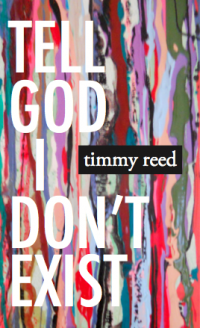 Tell God I Don’t Exist
Tell God I Don’t Exist
by Timmy Reed
Underrated Animals Press, 2013
92 pages / $12.00 buy from Underrated Animals Press
1. The album Shrines by Purity Ring is easily in my top five albums from the past five years. When I hear the lush electronic wooziness of songs like “Fineshrine” I feel like I’m being hugged—enwrapped in a surreal, dreamy blanket of sound.
2. When I read Timmy Reed’s Tell God I Don’t Exist I get a similar sensation.
3. These stories are hazy fever dreams, ecstatic jokes, deviant fairy tales.
4. When describing this collection the word twee comes to mind.
5. Twee is so often taken as derogatory, but this collection is saccharine sweet in a good way.
6. There’s a lot of handholding in these stories.
7. There’s a lot of candy, too:
“We eat licorice shoelaces and wayward mosquitoes, but we mostly eat sweets. We scarf cannolis. We munch crullers. We visit the snowball stand in bare feet and sleep next to pitchers of lemonade. We grow fat on melancholy pastries. We sweat sugar in the sun. We speak, through a saccharine haze, of taking vitamins. We speak in the past tense of the future as if it were part of a childhood dream.”
8. I found this inside my copy of the book:
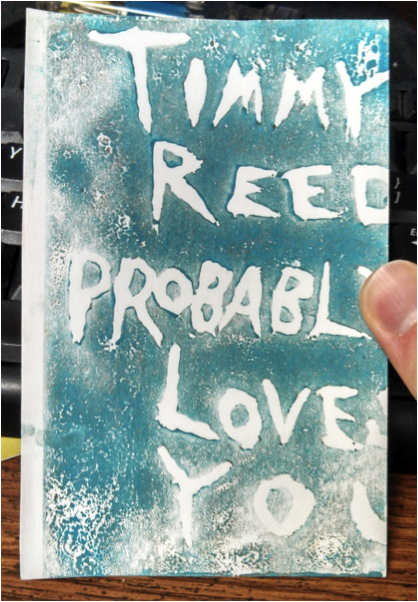
9. I really hope everyone’s copy comes with a print that tells them that Timmy Reed (in all likelihood) loves them, because it’s true.
March 4th, 2014 / 3:09 pm
25 Points: TheNewerYork
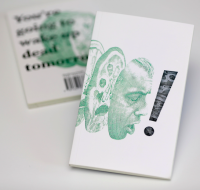 The Weekender 3-Pack
The Weekender 3-Pack
by TheNewerYork
240 pages / $22.00 buy from TheNewerYork
1. There is a market (and when I say this I mean like, a common, growing… need, among readers) for very brief literature. This is not news for the twitter generation, the HTMLGIANT community, or internet writers. But, it bears repeating. We need things smaller.
2. As much as we need things short, we also need them to be deep. No!–we need some of it deep. We also need some of it funny and purejoy. We need some of it confusing. We need unsettling. We need beautiful, and we need deep.
3. TheNewerYork pours these parts (mostly equally) into the 70-some pages of each of their three journals (Book 0, Book 2, and Book 3–Book 4 is forthcoming this year). It’s this wildly interesting, thoughtful, colorful, ugly, pretty, stupid, weird. It’s equal parts smile-inducing and vomit-inducing. And no single piece of experimental fiction in these collections goes over two pages in length.
4. When it comes to literature, TNY is like those bags full of halloween-sized candies. You want two or three at a time, you reach in, and take what you get. Some skittles, some m&ms, some fucking Almond Joy (ugh!), and every once and awhile a severed finger, a used condom, a sticky note with the answer to life written on it.
5. Aside from length and diversity, these pieces share at their fundamental bottom new forms of storytelling. David Foster Wallace solidified for us how fragmented culture/life/reality/consciousness is thanks to…well everything that constitutes society and its structures. Now our writers are taking up these little fragments and painting pictures of them, one at a time. Or, they are picking up a fragment (picture a shard of glass AS A SYMBOL for some little fragment or waste of society) and painting not it, but with it. With the colors the fragment contains. These pieces of literature are some of them the canvas and some of them the tool, the brush, the color, the pen.
6. Okay enough bullshit. These issues are fantastic. They entertain me very much. They make it fun to read.
7. These are perfect for reading on a lunch break, or during a 15 minute break in the middle morning or late afternoon. Like, I have trouble bringing novels with me places and really getting into them during short, unpredictable moments throughout the day. Like, for me, the novel I read in bed each night is not something I’m taking with me in the bathroom, or to work, or on the train. I have found that these short pieces are so concisely packed with thought and contemporaryness (?) that they’re as entertaining, emotional, and thought-provoking as anything I could be doing with a spare 6 minutes. That’s right, I said it. Thought-provoking.
8. With that said, I did read all of issue 2 (in 3 chunks) while in the passenger seat of my girlfriend’s car on a 5 hour drive home after Christmas.
9. And, it’s the only ‘book’ I’ve been able to read in a car, without puking or even wanting to.
10. And, I’ve picked up that same issue six times since Christmas, flipping open to a random spot and reliving some freaky or funny tale which, as I re-read, I can feel becoming as real an artistic comfort to me as a Books album, or Season 9 of Seinfeld. READ MORE >
February 18th, 2014 / 6:33 pm
25 Points: Big Sur
 Big Sur
Big Sur
by Jack Kerouac
Penguin Ink, 2011
224 pages / $12.84 buy from Amazon
1. The movie, based on Jack Kerouac’s book, based on Big Sur, 36.1075 °N, 121.6258 °W.
2. Voiceover beginning to end, front to back.
3. I think of all the times I’ve been to Frisco, ages 5, 6, 7, 9, 9, 9, 11, 20, 21, 22, 23, 24 and 28. I think of City Lights, North Beach, Sea Otters, Strip Clubs, Merry-Go-Rounds, Mirrored Ceilings, Fake IDs, Suspension Bridges, Soccer, Coffee and Bread.
4. Boredom. On my fifth birthday there were too many children and too many presents. In the backyard my father starred in Oscar the Grouch’s Cooking Show. He juggled raw eggs and ate tuna fish/jellybean/sauerkraut sandwiches. There were words the whole time but nobody talked.
5. Iodine blast. Iodine: A novel by Haven Kimmel from a song by Leonard Cohen from iodine, I, atomic number 53. From my mother’s skin before I was my mother’s.
6. Big Sur: A descent into madness, a portrait of hell, a catalogue of imperfections.
7. When I read the intimate details of our lives out loud it hurts less.
8. Things included but not mentioned in this essay: words, cigarettes, stars, beer, wine, whiskey, sand, waves, women, rhymes, slow motion, flames, bottles, trees, water, haze.
9. City Lights is my second favorite bookstore in America. Anthony Edwards as Lawrence Ferlinghetti. Anthony Edwards as Dr. Mark Greene in ER, the longest running primetime medical drama until it wasn’t. Dr. Mark Greene eating a Chicago Hot Dog over the Chicago River on a break from Chicago’s Cook County General Hospital. When I eat a Chicago Hot Dog over the Chicago River I think of Sandra Bullock, not Lawrence Ferlinghetti. I never liked ketchup.
10. FACT: Second movie I’ve seen in two weeks about the beats. Third movie on Jack I’ve seen in five years. READ MORE >
February 6th, 2014 / 4:45 pm
25 Points: Blitzkrieg
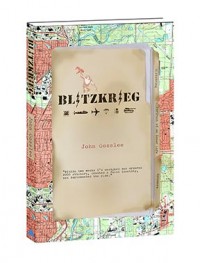 Blitzkrieg
Blitzkrieg
by John Gosslee
Rain Mountain Press, 2013
60 pages / $15.00 buy from Rain Mountain Press
1. Split-screen madness
2. Piano-playing, the keys turned to pills
3. A kiss on a grimy elevator floor
4. The interior of the exterior of a shut door
5. An angel with her arms torn off
6. Rejection, acceptance, rejection
7. Illustrations by Yumi Sakugawa, trees in a forest, pachyderms inside the breadth of a bird’s chest
8. Flashmobs, tornados, claws and urninals
9. An all-out assault on the status quo
10. A baker’s dozen of streets and silence mingled with the rattle of dead claws on stony ground READ MORE >
January 28th, 2014 / 3:12 pm
25 Points: EarthBound by Ken Baumann
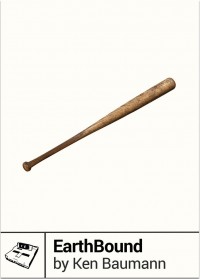 Earthbound
Earthbound
by Ken Baumann, Foreword by Marcus Lindblom
Boss Fight Books, 2014
191 pages / $14.95 Buy from Boss Fight Books
1. This past December found me at several Christmas parties and office get-togethers (mostly with my wife’s coworkers and friends). Because I’m kind of self-absorbed and, even if I wasn’t, I’ve been spending the past five months with my newborn son, I don’t have much to contribute by way of conversation, so I turned to talking about Earthbound.
2. My parents never bought me a Super Nintendo or any of the other 90’s child indulgences (although I was a member of the Burger King Kid’s Club and was allowed to watch hour upon hour of Nickelodeon), so I had no point of reference for the cult-hit video game.
3. I had trouble finding anyone who knew what I was talking about. They had never heard of the game, and cared even less about Ken Baumann’s book.
4. The few times that I actually found someone who played Earthbound our conversations were hauntingly simple.
5. Me: Have you ever played Earthbound?
Partygoer: You need to go home tonight and play it right now. [End of conversation.]
6. I never got around to it. Blah-blah work. Blah-blah new parent. Blah-blah smartphone.
7. But the real reason why I didn’t play it was because of how purely pleasurable Baumann’s book is.
8. Ken Baumann’s Earthbound is a charming intermingling of videogame history, walkthrough, memoir, and philosophy. He serves as Virgil to the reader’s Dante as he guides us through the “total inverse of Dante’s Hell” that is Twoson, Threed, Summers, and the other locales of the game while drawing on everything from Straw Dogs and Jung to Gak’s role in 90’s gross-out culture and House.
9. Baumann depicts the “irretrievable beauty in video games…” as a Romantic would depict vernal wood. As sacred: “Ephemeral glitches that point to the sublime. Randomized variables that are made more poetic in their expression by their adjacency to the rote and the banal.”
10. The strongest of Baumann’s threads are the biographical ones. Earthbound [the book] is a study of how Earthbound [the game] impacts lives, especially the lives of little Kenny in Texas, his estranged brother Scott, and the support of Ms. Baumann, and the loving Aviva. READ MORE >
January 23rd, 2014 / 4:43 pm
25 Points: The Circle
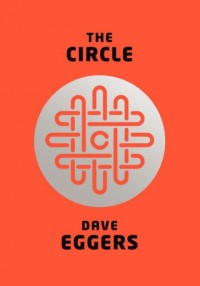 The Circle
The Circle
by Dave Eggers
Knopf, 2013
504 pages / $27.95 buy from Powell’s or Amazon
1. Nothing about The Circle is very surprising or new. Big Brother is a clichéd, outdated reality show. The privacy vs. transparency debate is as ubiquitous as the scope it describes. It’s obvious from page one which side the novel will end up on.
2. I don’t care about any of this. The transparency-obsessed campus of The Circle (a proxy for Google) is not an unappealing environment to me. Most of the time, it’s ridiculously attractive.
3. The relentless lists of online activities that the protagonist, Mae, conducts daily are not the downward spirals of doom they should be. Instead, the repetitive passages feel hypnotic and pleasurable and I live vicariously through Mae’s Internet high. I should read her decline into web addiction and over-sharing critically, but instead I feel the same breathless, click-through-again compulsiveness that I do staying up too late online, browsing websites and managing my own social media accounts.
4. I can’t figure out if I’m the exact target audience for The Circle, or the exact opposite of it. Are its warnings meant for those younger than me who’ve never known a world without Google? Or those older, who take a certain pride in refusing to get an Internet connection or email account?
5. The novel circles around the same few themes, visits the same few locations, and its protagonist, Mae, repeats the same tasks over and over again. This repetition gives me an intense, almost physical pleasure: a caffeine-like tightness in my brain, behind my ears; a lifting in my chest; the impulse the read as quickly as possible.
6. It’s more engaging to read about what Mae does on her computer than about her interactions with human characters, who are consistently flat—placeholders for perspectives.
7. Internet Rorschach: is this passage a dark chute of terror or an energizing, endorphin-generating endurance run? “[Mae] embarked on a flurry of activity, sending 4 zings and 32 comments and 88 smiles. In an hour, her PartiRank rose to 7,288. Breaking 7,000 was more difficult, but by 8, after joining and posting in 11 discussion groups, sending another 12 zings, one of them rated in the top 5,000 globally for that hour, and signing up for 67 more feeds, she’d done it. She was at 6,872, and she turned to her InnerCircle social feed. She was a few hundred posts behind, and she made her way through, replying to 70 or so messages, RSVPing to 11 events on campus, signing nine petitions and providing comments and constructive criticism on four products currently in beta. By 10:16, her rank was 5,342, and again, the plateau — this time at 5,000 — was hard to overcome. She wrote a series of zings about a new Circle service, allowing account holders to know whenever their name was mentioned in any messages sent from anyone else, and one of the zings, her seventh on the subject, caught fire and was rezinged 2,904 times, and this brought her PartiRank up to 3,887.” The passage continues for several more pages.
8. Fiction Writing 101: A complex character should always want something. For effective character development, ask: what does the character want? Mae wants a job at The Circle, and she gets it on page one. Her character is empty, simplistic, a shell.
9. Perhaps stripping Mae of any real wanting is the novel’s innovation: what happens when we want for nothing? Are we human anymore, or just shells of ourselves?
10. Something Mae sort of wants is a good rating of her work at The Circle (99% or higher for every inquiry she answers, which number in the hundreds each day). But this obsession with approval and high ratings doesn’t quite ring true to me: with quantity comes ambivalence, not a desire for quality. When reviews are always perfect, they have no meaning. READ MORE >
January 16th, 2014 / 4:38 pm
25 Points: The Princeton Encyclopedia of Poetry & Poetics, 4th Edition
 The Princeton Encyclopedia of Poetry & Poetics, 4th Edition
The Princeton Encyclopedia of Poetry & Poetics, 4th Edition
ed. Roland Greene, Stephen Cushman, Clare Cavanagh, and Jahan Ramazani
Princeton University Press, 2012
1680 pages / $49.50 buy from Amazon or Powell’s
1. After graduating from college and while in the process of applying to MFA programs, I bought a copy of The Princeton Encyclopedia of Poetry & Poetics having come across it in the discount bins of a book retailer down at the local strip mall hell lost somewhere between the suburbs of New Jersey and the rest of Southern California.
2. This was the hardcover 3rd edition published in 1993—previous editions appeared in 1974 and 1963.
3. Out of a total 1100 articles, the new paperback 4th edition presents 250 “entirely new” entries.
4. The Encyclopedia is what’s commonly referred to as a desk reference, i.e., it’s handy to have round.
5. With my 3rd edition I set out to learn EVERYTHING about the reading and writing of poems.
6. I’ve found this a daunting task. Nonetheless, my 3rd edition has been well used over the years.
7. It is a little geeky feeling—but nonetheless stimulating!—to pour over entries, allowing various elements of chance to guide where your floating interests and eyes may take you.
8. A Bibliomancy Tool: righteously applied in the proper MFA program deconditioning environment it just might save a young budding poet or two from the curse of professionalization. Or else it will studiously assist in that very further professionalization.
9. Five types of entries are included: “terms and concepts; genres and forms; periods, schools, and movements; the poetries of nations, regions, disciplines, and social practices such as linguistics, religion, and science.” These “are provisional, and many items could move among them.”
10. “A large number of entries are written by scholars of poetries other than English—a Hispanist on pastoral, a scholar of the French Renaissance on epidexis, a Persianist on panegyric.” READ MORE >
December 17th, 2013 / 6:35 pm
25 Points: Swamp Isthmus
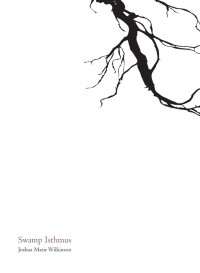 Swamp Isthmus
Swamp Isthmus
by Joshua Marie Wilkinson
Black Ocean, 2013
88 pages / $14.95 buy from Black Ocean
1. I’ve been working on this since this past spring. After reading Beyond The Like Factory & The Hatchet: Rethinking Poetry Reviewing by Joshua Marie Wilkinson, I knew I had to finish this review. This is actually a scary thing to write now.
2. Swamp Isthmus is Joshua Marie Wilkinson’s first book with Black Ocean and the second book in his No Volta pentalogy (first is Selenography, Sidebrow 2010; third will be The Courier’s Archive & Hymnal, Sidebrow 2014). I’ve not read Selenography so there is perhaps some things I’ve missed by not having done so.
3. A swamp is a living-dead landscape; the living feed off of the dead and dying, the most dead areas are filled with the most life and the least dead areas are those with the least life.
From the Hart Crane epigraph (The resigned factions of the dead preside) in the very beginning of Swamp Isthmus, Joshua Marie Wilkinson creates a zombie landscape, a zone that infects the living with symptoms of deadness. In a zombie film this deadness comes to the living with capitalist critiques of our alienating existence, but in Swamp Isthmus we see a zombie that carries critiques of the ecologic and nostalgic sort.
4. The lyrics of Swamp Isthmus are a living-dead endeavor: precise breaks eluding a narrative; linearity reduced to phrases contained in the line.
to disappear you must
tunnel discreet
descrying over nightfall
with unclogged wind
this coast is longer than a train track
needing coarse woolen cloth &
the clothes you’re in
so needing a bad song
to whistle what’s known
but may stick
to another’s mouth
5. Similar to what Zach Savich says about Wilkonson’s lyrics, to kill a zombie takes precision: remove the head, destroy the brain.
6. In The Dead Rustle, The Earth Shudders, Evan Calder Williams points to something that is obvious in Swamp Isthmus:
“…the undead have never really been dead in the first place—they never died.’
7. To cross a swamp takes precision and a mind for the contradiction of the living-dead: step here, not there; eat this, not that; drink plenty of water, but don’t drink the water.
footpaths marked by
false stars
it gathers up in
this bladder of light
8. the trees palsy/ to our bad lines.
9. In some respects, there is an admission with these lines of the failure of poetry to enact this landscape; the lines aren’t good. In some respects it’s proof that poetry works: even the bad lines cause the landscape to shudder.
10. There may be an actual “Swamp Isthmus.” The book’s title might be a reference to Gastineau Channel in Alaska, which at low-tide creates an isthmus from mainland Alaska to Douglas Island. Fritz Cove Road, mentioned in the section, I Go By Edgar Huntly Now, is a road that “dwindles down/to a patch of currants” (note the clever word play on ‘currents’) but it also ends at the place where Gastineau Channel meets Fritz Cove. A place that may eventually be unnavigable by watercraft. A place severely affected by glacial melt/global warming. READ MORE >
December 3rd, 2013 / 5:33 pm
